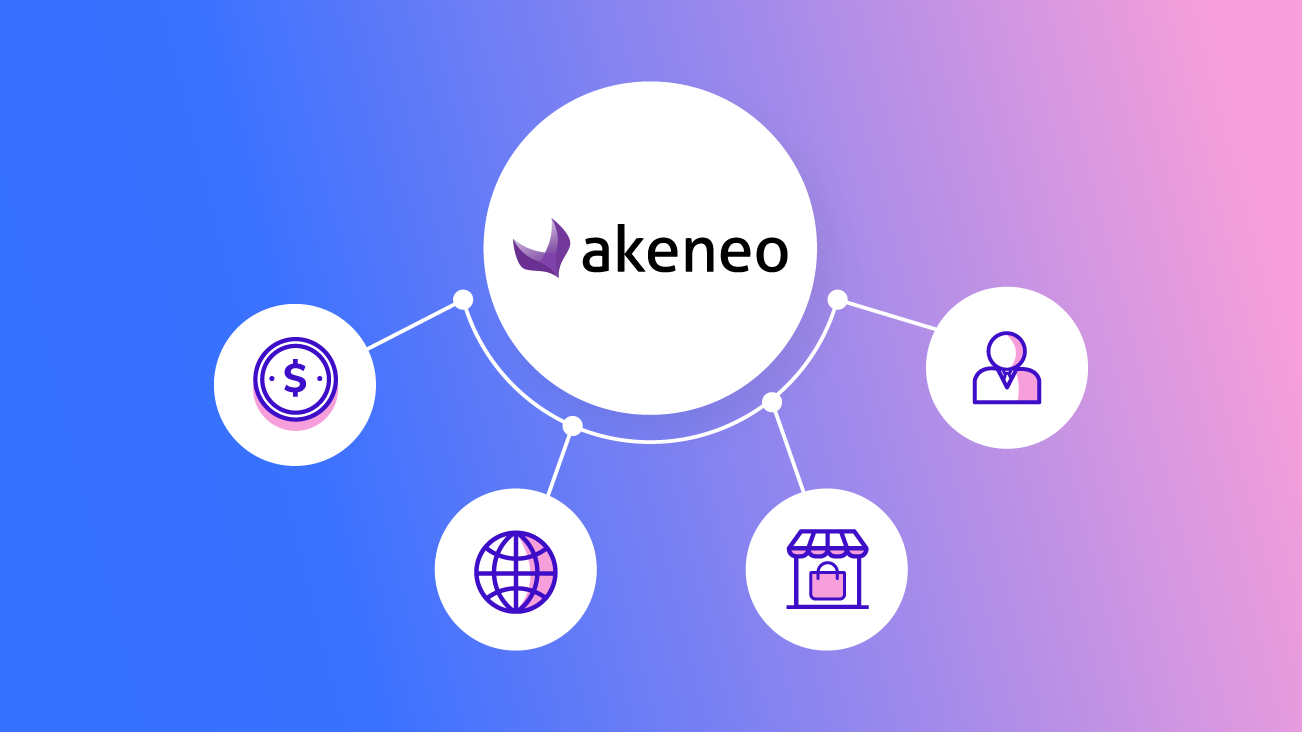2021 Commerce Goals: Key Objectives a PIM Solution Can Help Businesses Achieve

As businesses work to build their 2021 commerce strategy and prioritize customer experience objectives, identifying solutions to meet these objectives is at the forefront of their minds.
There are many solutions and tools available that can help businesses achieve their goals, particularly through leveraging a Product Information Management (PIM) solution. Implementing PIM will help organizations reduce online returns, drive multi-channel growth, fuel global expansion, and improve personalization.
Reduce Online Returns
Returns are a common hurdle for any organization selling online. They have a direct impact on revenue and were predicted to cost U.S. businesses more than $550 billion in 2020. Not only can returns have an impact on business revenue, but they can also often create a poor experience for customers, impacting customer loyalty. It’s no surprise that many businesses' commerce strategy cite reducing online returns as an objective.
In many cases, returns are the result of poor or inaccurate product data, including descriptions, images, sizing variations, or product details. Incorrect information sets the wrong expectations for customers. Historically, products purchased online are returned at two to three times the rate of returns for store-bought products. With much higher online return rates, it’s imperative that businesses do everything possible to present accurate, detailed, and compelling product information.
The best solution to dramatically improve a business’ product data information is to deploy a PIM solution. When properly implemented, a PIM makes it easier to publish accurate product data and contextualize it for different customers and channels.
A PIM provides a centralized solution for managing product data and PIM providers like Akeneo have several features in place to reduce the time it takes for data governance.
Automated Enrichment Rules
Automated enrichment rules enforce standardization and enrich data, improving the quality and accuracy of product information by removing human error, as well as expediting the enrichment process.
Automated features can also help manage product data in bulk, which is a large contributing factor to reducing the time needed to get new products to market.
Product Completeness
Product completeness is a PIM capability that controls rules and guidelines for what product data is required before it’s released for publishing. This ensures that products never go live with incomplete data that leads to misinformed or confused customers.
Validation
Validation features go beyond product completion. Although a product's data attributes may contain values, there are lots of reasons the value could be incorrect. PIMs support automatically validating attributes as well as flagging attributes for review by product data management team members.
PIM solutions have been proven to drastically reduce return rates and are a good option to consider if this is a 2021 commerce objective.
Drive Multi-Channel Growth
Multi-channel commerce is when businesses decide to use other online channels to sell their products. Channels could include online marketplaces, distribution partners, social media, Google Shopping, and more. Connecting with customers through these channels enables businesses to expand their reach.
Each channel has different rules and requirements. If a business doesn’t meet these requirements, a product may be rejected, or in cases of very poor product information, a seller’s accounts can be suspended.
For example, Google Shopping requires unique product identifiers for every product. These identifiers let Google match products with similar products on Google Shopping. If these identifiers aren't correct, then Google won’t publish a company’s products and their account could be suspended.
Ensuring that product data remains consistent and correct across channels while adhering to the various rules is tedious and challenging, especially if completed manually. PIM systems address these challenges by enabling businesses to automatically publish unique sets of data to multiple channels once each channel is properly set up. With a PIM, all product data comes from the same source so whatever the channel, the same product information is published.
For more information on how a PIM can optimize the return on investment for multi-channel selling, watch our on-demand Data Governance webinar.
Fuel Global Expansion
Because of commerce, it’s easier than ever for companies to sell their products globally, making borderless commerce more and more attractive to businesses of every size. Revenues generated outside of a company’s home market are rapidly increasing. Especially as China’s and APAC’s growth trajectory begins to dominate North America, many traditional North American businesses are building global growth strategies to expand into these regions.
Global expansion is a large undertaking and has a long list of requirements in order to be successful. Different regions come with different cultures, languages, currencies, and more. Not only is creating localized content tedious, but organizing and distributing this content accurately can be time-consuming.
Most PIMs include localization features that can ease the challenges that come with globalization. With Akeneo PIM, it’s easier for businesses to manage product localization through support of five globalization capabilities that the platform supports:
- Localized product descriptions
- Localized multimedia (models, photos, videos, etc.)
- Localized weights, sizes, measurements, etc.
- Localized SEO
- Localized currency
A PIM simplifies the processes involved with global growth with these features and organized workflows that enable teams to streamline product publication across the globe. By implementing a PIM and optimizing workflows, businesses can increase the speed to market in new locales.
Improve Personalization
Personalizing a buyer's journey improves customer retention and ultimately increases online conversions and revenue. It’s no surprise that many organizations are setting personalization as one of their 2021 commerce objectives.
For companies that make, distribute, or sell products, a PIM is a critical component of a successful personalization strategy. In 2020, the industry adopted the term Product Experience Management (PXM) to define solutions that deliver personalized product experiences.
PXM considers how audiences experience products visually and from an informational perspective. It’s not a specific tool or platform, but rather the digital experience that surrounds a product. An effective PXM solution requires providing product information in a way that is both contextualized and personalized across the customer journey.
Enabling PXM requires optimizing content, context, and analytics related to product information:
Content: Support of product-oriented personalization requires developing the means to create product information profiles that support the entire customer journey. Product data enrichment means creating content that is tailored to every stage of the buying journey.
Context: This is another crucial component of a complete PXM solution. Context involves looking into how customers are interacting with products on each channel a business supports, and ensuring the product information needed to make what an audience sees on each channel is contextually relevant.
Analytics: Gaining insights into what a business's audiences are experiencing as they view their product information means incorporating analytics into a PXM solution. Properly instrumented PXM solutions allow businesses to gain a better understanding of how customers are interacting with products and, most importantly, how they might improve that experience. By determining consumer behavior at every touchpoint, businesses can develop better buying experiences.
A complete PXM solution includes personalization, and PXM/personalization is only possible with PIM at the foundation. To gain a deeper understanding of PXM and how it can solve personalization challenges, watch our on-demand webinar "What is PXM Anyway?"
Four Objectives, One Solution
If reducing online returns, multi-channel growth, global expansion, and personalization are on a business’ 2021 list, then investing in a PIM can help them move closer to achieving each of these objectives, when implemented and managed correctly.
There are several PIM providers that should be evaluated to make sure it works for an individual business and its unique requirements. We believe that Akeneo is one of the providers that merits serious consideration. Whichever PIM solution a business elects, it's sure to help them achieve the four commerce objectives covered in this blog.


